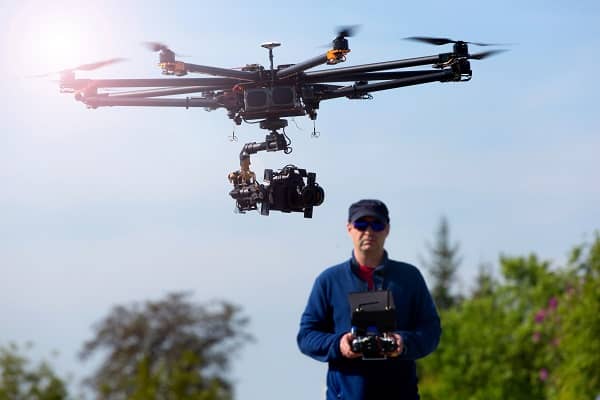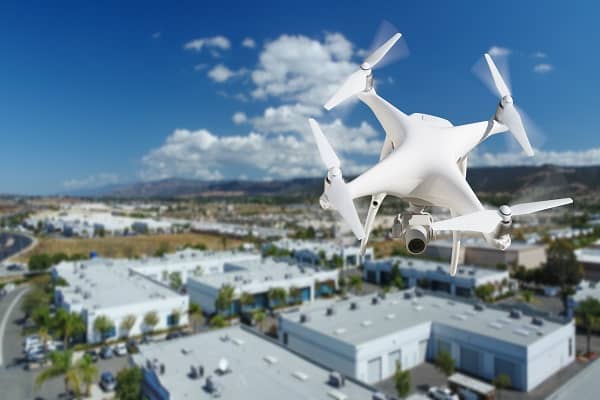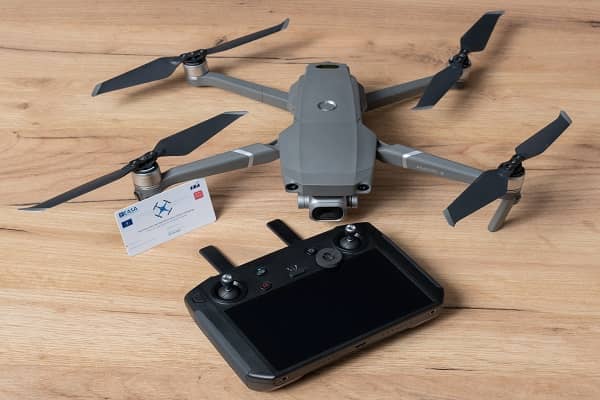Drones may have been developed with the military in mind, but these aerial vehicles have been embraced by a number of different industries in the time since. If you’re interested in learning how to operate one, chances are you’ll need to earn your drone pilot certification.
As per regulations (Part 107) issued by the Federal Aviation Administration (FAA), pilots must obtain licensure to fly drones commercially. Check out our guide below to learn about commercial drones, certification requirements, and more.
Table of Contents
Who Needs to Become an FAA Certified Drone Pilot?

According to the Part 107 requirements, all commercial drone pilots must receive their license to perform drone work for businesses. The regulations were introduced to help minimize risks to other aircraft, people, and property.
Recreational pilots may be relieved to find out they don’t need to get certified, but some training is required. The Recreational UAS Safety Test (TRUST) offers a free course to hobbyists flying drones under 55 lbs. and within the visual line of sight.
Other requirements for recreational drone pilots include they only fly as part of a hobby (no side jobs). They must register the UAV with the FAA; they may only fly in Class G airspace and away from emergency response efforts.
The same restrictions apply to those who intend to fly commercially, though there are some additional requirements they must adhere to. They include:
- Be at least 16 years of age
- Be able to read, write, speak, and understand English
- Be in a physical and mental condition to safely fly a drone
- Fly at or below 400 feet
- Use anti-collision lighting when flying during civil twilight or evening
- Fly at or under 100 mph
- Yield right of way to manned aircraft
- Avoid flying from a moving vehicle, unless in a sparsely populated area
Exceptions may be issued by submitting a Part 107 waiver from the FAA or through approval for special airspace authorization from the FAA.
Additional Requirements for Commercial Drone Pilots
Once applicants receive their remote pilot certificate, they must abide by the following requirements:
- Maintain drone registration every 36 months and keep your remote pilot certificate available whenever you fly.
- Keep your license up to date by sitting for the recurrent aeronautical knowledge test every 24 months.
- Keep your small UAS available to the FAA for inspection or testing, and maintain all required documents.
- Report any accidents, injuries, or property damage of over $500 to the FAA within ten days of the event
- Conduct all necessary preflight inspection procedures to ensure the small UAS is safe for operation. This includes performing specific aircraft and control station system checks.
Who Doesn’t Require an FAA Drone License?

Anyone who is already a licensed manned aircraft pilot can skip the Part 107 exam. That said, part 61 certificate holders will have to complete a free, online training course titled “Part 107 Small Unmanned Aircraft Systems (sUAS) ALC-451.” You can find these resources at the FAA FAASTeam website.
After receiving the course completion certificate, manned aircraft pilots must:
- Complete FAA Form 8710-13 (FAA Airman Certificate and/or Rating Application for a remote pilot certificate)
- Validate their applicant identity, and make an in-person appointment with their local FSDO, an FAA-designated pilot examiner (DPE), an airman certification representative (ACR), or an FAA-certificated flight instructor (CFI) so that they can sign the form.
What’s on the FAA Drone License Exam?
You can expect the following test topics to appear on the initial aeronautical knowledge test, or, as known by insiders, the “Unmanned Aircraft General – Small (UAG):
- Applicable regulations relating to small unmanned aircraft system rating privileges, limitations, and flight operation
- Airspace classification and operating requirements, and flight restrictions affecting small unmanned aircraft operation
- Aviation weather sources and effects of weather on small unmanned aircraft performance
- Small unmanned aircraft loading and performance
- Emergency procedures
- Crew resource management
- Radio communication procedures
- Determining the performance of small unmanned aircraft
- Physiological effects of drugs and alcohol
- Aeronautical decision-making and judgment
- Airport operations
- Maintenance and preflight inspection procedures
- Night operations
How to Study for Your Commercial Drone Pilot License
Estimates hold that an aspiring certified drone pilot will spend around 15-20 hours studying for the Part 107 FAA exam. Though applicants are not required to sit for preparatory student courses, such efforts are often associated with higher pass rates.
Find out how you can earn your degree in less than 2 years
18
ONLY
months





Online courses and video lessons are available to individuals working full time or with families who need to study at their own pace. Individuals can also solicit the help of a UAV coach to walk them through the test material.
Before the exam, aspiring commercial drone pilots should also consider taking an FAA Part 107 Remote Pilot practice test to get more familiar with test questions.
To help contain the spread of Covid-19, FAA Airman Knowledge Testing is now available online. Aspiring pilots can also visit their local testing center to sit for the exam in person.
How Long Does it Take to Become a Commercial Drone Pilot?

After students pass the Aeronautical Knowledge Test, they must apply for and obtain a Remote Pilot Certificate and complete all remaining administration requirements. This should take no more than 10-15 minutes to complete.
The FAA will take six to eight weeks to issue a permanent remote pilot certificate via mail. However, students can request a temporary remote pilot certificate to begin exercising privileges beforehand. Temporary certificates will be delivered within ten business days.
How Much Does it Cost to Obtain a Drone Pilot License?
The FAA drone license exam carries a flat fee of $175, which can be paid directly to the testing center where you schedule your exam. Individuals are also required to register their drones, which cost five dollars for three years.
According to most insiders, these start-up costs are well worth it. Though the Bureau of Labor Statistics (BLS) doesn’t currently report on drone pilots, other sources like UVA Coach report that professional UAV pilots can earn anywhere from $33,000-$79,000 per year. Meanwhile, freelance and client-based work can pay anywhere from $200-$300 per project.
Find out how you can earn your degree in less than 2 years
18
ONLY
months





Conclusion
With opportunities for commercial drone pilots increasing every day, it’s no wonder why there’s been an uptick in interest regarding the profession. If you’re looking for a way to get your foot in the door, think about earning your degree from the New England Institute of Technology.
The program will also prepare students to obtain the following certifications:
- FAA 107 Remote Pilot Certificate
- FANUC Robot Operator & Technician Certificate
Graduates can seek entry-level career opportunities in the emerging field of unmanned aircraft systems. They’ll also be prepared to work in data collection for law enforcement or real estate, remote sensing, search and rescue, navigation, and other areas of the drone industry. Request more information or call us today at 401-426-5715.
FAQ
How much money do commercial drone pilots make?
The Bureau of Labor Statistics (BLS) doesn’t currently report on drone pilots, but certain sources report professional UAV pilots in salaried positions can earn anywhere from $33,000-$79,000 per year. Freelance and client-based projects typically pay anywhere from $200-300.
How much does drone certification cost?
There is a $175 testing fee for the FAA drone license exam, which can be paid directly to the testing center where you schedule your exam. Individuals are also required to register their drones, which cost five dollars for three years.
How long does it take to become a certified drone pilot?
The FAA will take anywhere from six to eight weeks to issue a permanent remote pilot certificate via mail. However, students can request a temporary remote pilot certificate to begin exercising privileges beforehand. Temporary certificates will be delivered within ten business days.
How do I become a certified drone pilot?
To become a certified drone pilot, you must pass the FAA Part 107 test. To sit for the exam, you must be at least 16 years old, read, write, speak, and understand English, and be in a physical and mental condition to fly a drone safely.

